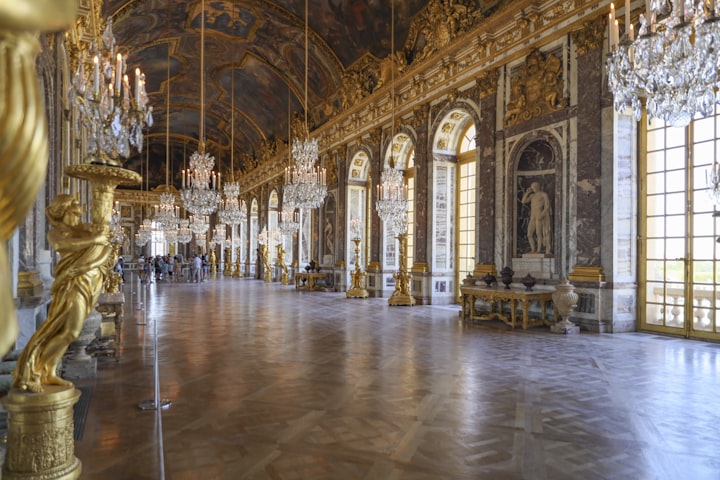The Daily Routine of King Louis XIV
The "Sun King" loved having an audience

Louis XIV is one of the most famous and the longest reigning monarch in European history. His reign lasted from 1643, when he inherited the French throne from his father, to 1715.
During this time, he waged countless wars, colonized many territories, encouraged the advancement of the arts and built the glittering palace of Versailles — a project that cost a whopping 2–300 billion US dollars. Interestingly, his construction of Versailles attracted the envy of other European monarchs, many of whom tried to replicate its breathtaking splendor.
Because of his immense fame, Louis’s private life gained attention from scholars. He was known for his countless love affairs. Although he married Maria Theresa of Spain and had six children with her, he enjoyed the company of numerous mistresses, many of whom had children of their own. While this might seem ironic for an avowedly Catholic monarch, it wasn’t uncommon for kings to be unfaithful to their wives.
Louis de Rouvroy, the duc de Saint-Simon, was a minor noble who recorded a detailed summary of King Louis’s daily habits. Like many other French nobles, he lived in Versailles, since the King preferred to keep his potential rivals in his sights. Despite the King’s love of flattery, Louis de Rouvroy did not shy away from exposing the less flattering aspects of court life — including the King’s somewhat peculiar daily routine.
Waking Up

Louis was woken each morning at exactly eight o’clock. According to witnesses, Louis did not normally sleep in the bed with either his mistresses or his wife.
Rather, only a lone “chief valet de chambre” — the male servant acting as the main attendant of the monarch — slept in the royal chamber.
As reported by Saint-Simon, he was greeted by a mass of people crowding into his royal chamber:
The chief physician, the chief surgeon, and the nurse (as long as she lived), entered at the same time. The latter kissed the King; the others rubbed and often changed his shirt, because he was in the habit of sweating a great deal. At the quarter [hour], the grand chamberlain was called (or, in his absence, the first gentleman of the chamber), and those who had, what was called the grandes entrées.
Immediately, the men accosted the King with questions and petitions, hoping to receive royal favours before he commenced his daily tasks. In the rare case they didn’t have anything to discuss, there was a short religious service.
After the religious service, more people crammed into the royal chamber as the King put on his socks and shoes. He shaved every other day and was never seen without his signature short wig. Another very public prayer followed.
Saint-Simon suggested the King enjoyed the attention he received throughout the day, because he was especially fond of praise. The writer even hinted the King was almost worshiped as much as God, since priests would shower him with compliments from their pulpits.
After prayer, the Sun King fulfilled his reputation as a domineering monarch as he assigned his subjects daily tasks:
He found there, or was followed by all who had the entrée, a very numerous company, for it included everybody in any office. He gave orders to each for the day; thus within half a quarter of an hour it was known what he meant to do; then his crowd left directly.
Saint-Simon noted the people who remained with the King were his favourites and some of his illegitimate children — something the minor nobleman wrote about with disdain.
Feasting

At ten o’clock, supper was served. Nobles at Versailles enjoyed large and lavish feasts. Everyone at court — except the servants, of course — was invited to partake in large quantities of wine and food. During the feast, ministers and others wanting the King’s attention could speak to him without violating decorum.
Louis was known for his extreme appetite.
His sister-in-law, the so-called Princess Palatine, marveled at his eating habits, stating:
I have often seen the king eating four full plates of soup, a whole pheasant, a partridge, a big dish of salad, two big slices of ham, some mutton with jus and garlic, a plate of pastry, and then fruit and some hard-boiled eggs.
As a result of his excessive eating, Louis reportedly had a stomach twice the size of the average human. Historians suspect the King died in 1715 because of his overly rich diet and lack of exercise, even though he was an avid hunter like the rest of the Bourbons.
After his supper, the King visited the ante-chamber of Madame de Maintenon, his main mistress. She had first worked as the governess of Louis’s illegitimate children. The two later married secretly.

Visiting his children’s former governess in her room that overlooked the royal gardens became one of the most important parts of Louis’s day at the end of his life.
Here, he visited with ministers and enjoyed leisure alongside his secret wife. It was one of the only parts of the day when the King was not seen in public.
Retiring

After a day of hunting or fulfilling other royal duties, King Louis — an ardent animal lover — fed his dogs.
The last part of Louis’s day was much less spectacular than the rest. Although he bade farewell to the swell of admirers watching his every move, only a select few remained to watch the petit coucher:
He said goodnight with an inclination of the head, and whilst everybody was leaving the room stood at the corner of the mantelpiece, where he gave the order to the colonel of the guards alone. Then commenced what was called the petit coucher, at which only the specially privileged remained. That was short. They did not leave until he got into bed. It was a moment to speak with him.
Since Saint-Simon did not provide much detail about the petit coucher, it is fair to assume he was not invited.
Nevertheless, he was able to capture the most revealing parts of Louis’s life — making him seem less like an untouchable “Sun King” and more like an ordinary man beneath royal trappings.
About the Creator
Ilana Quinn
I am a student who loves writing about history, travel, faith and life experiences. Feel free to check out more of my writing at https://linktr.ee/ilanaquinn :)






Comments
There are no comments for this story
Be the first to respond and start the conversation.